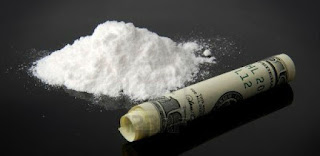people cite many reason for using tobacco, including pleasure, improved performance and vigilance, relief of depression, curbing hunger, and weight control. The primary addicting substance in cigarette is nicotine. But cigarette smoke contains thousands of other chemicals that also damage health. Hazards include heart disease, lung cancer and emphysema, peptic ulcer disease, and stroke. Withdrawal symptoms of smoking include anxiety, hunger, sleep disturbances and depression.
although many people have a drink as a " pick me up ", alcohol actually depresses brain. Alcohol lessens your inhibitions, slurs speech, and decreases muscle control and coordination, and may lead to alcoholism. Withdrawal from alcohol can cause anxiety, irregular heart beats, tremors, seizures, and hallucinations. In addition to its direct health effects, officials associate alcohol abuse with nearly half of all fatal motor vehicle accidents.
( also known as grass, pot, weed, herb ) marijuana which comes from the plant Cannabis sativa, is the most commonly used illegal drug in the Philippines. The plant produces delta-9-tetrahydrocannabinol ( THC ), the active ingredient associated with intoxication. Marijuana resin, called hashish, contains an even higher concentration of THC. The drug is usually smoked, but it can also be eaten. Its smoke irritates your lungs more and contains more cancer-causing chemicals than tobacco smoke. Common effects of marijuana also include pleasure, relaxation, and impaired coordination and memory. Often, the first illegal drug people use, marijuana is associated with increased risk of progressing to more powerful and dangerous drugs such as cocaine and heroin.
( also known as crack, coke, snow, rock ) cocaine use has gone down in the few years from 2007 to 2012. Cocaine was derived from the coca plant of South America, cocaine can be smoked, injected, snorted, or swallowed. The intensely and duration of the drugs effects depend on how you take it. Desired effects include pleasure and increased alertness. Short term effects also include paranoia, constriction of blood vessels leading to heart damage or stroke, irregular heartbeat, and death. Severe depression and reduced energy often accompany withdrawal.
( also known as smack, horse ) heroin use continues to increase. Effects of heroin intoxication include drowsiness, pleasure, and slowed breathing. Withdrawal can be intense and can include vomiting, abdominal cramps, diarrhea, confusion, aches and sweating. Overdose may result in death from respiratory arrest ( stopping breathing ). Because heroin usually injected, often with dirty needles, use of the drug can trigger other health complications including destruction of heart, valves, HIV/AIDS, infections, tetanus and botulism.
( also known as meth, crank, ice, speed, crystal ) use of this drug also has increased, especially in the West. Methamphetamine is a powerful stimulant that increase alertness, decrease appetite, and gives a sensation of pleasure. The drug can be injected, snorted, smoked, or eaten. It shares many of the same toxic effects as cocaine-heart attacks, dangerously high blood pressure, and stroke. Withdrawal often causes depression, abdominal cramps, and increased appetite. Other long term effects include paranoia, hallucinations, weight loss, destruction of teeth, and heart damage.
the club scene and rave parties have popularized an assortment of other drugs. Many young people believe these drugs are harmless or even healthy. These are the more popular club drugs:
( also known as MDMA or 3,4-methyllenedioxy-methamphetamine, as well as Adam, STP ) this is a stimulant and hallucinogen used to improved mood and to maintain energy, often for all-night dance parties. Long term use may cause damage to the brain's ability to regulate body temperature, sleep, pain, memory, and emotions.
also called Liquid XTC, G and blue nitro ) once sold at the health food stores. GHB's effect are related to dose. Effects range from mild relaxation to coma or death. GHB is often used as a date rape drug because it is tasteless , colorless and acts as as a powerful sedative.
( also called roofies, roche )this is another sedative that can be used as date rape drug. Effects include low blood pressure, dizziness, abdominal cramps, confusion and impaired memory.
( also called Special K, K ) this is an anesthetic that can be taken orally or injected. Ketamine ( Ketalar ) can impair memory and attention. Higher doses can cause amnesia, paranoia, and hallucinations, depression, and difficulty breathing.
( also called acid, microdot and mushrooms ( also called mushrooms, magic mushrooms, peyote, buttons ) popular in the 1960s, LSD has been revived in the club scene. LSD and hallucinogenic mushrooms can cause hallucinations, numbness, nausea, and increased heart rate. Long term effects include unwanted " flashbacks " psychosis and mood disturbances.
(known as angel dust, hog and love boat ) PCP is a powerful anesthetic used in veterinary medicine. Its effect are similar to those of ketamine but often stronger, The anesthetic effects are srtong that you can break your arm, but not feel any pain. Usually, tobacco or marijuana cigarettes are dpped into PCP and the smoked.













No comments:
Post a Comment